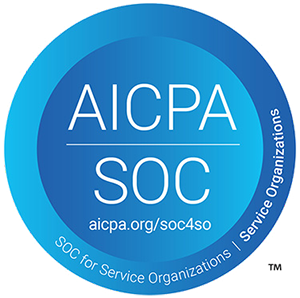Businesses must prioritize diversity, equity, and inclusiveness to attract top talent and stay ahead of the curve. Why, you may ask?
A McKinsey study has indicated that a diverse workforce enhances employee wellbeing and improves the bottom line significantly. Companies are increasingly making efforts to diversify their workforce and create a more inclusive working environment for all employees.
However, sourcing a diverse talent pool can be a difficult task. About 38% of recruiters say finding diverse candidates to interview is the biggest challenge. So how can employers ensure that their recruitment processes are fair and equitable?
In this diversity and inclusive recruitment guide, we will cover everything recruiters need to know about DEI hiring so that they can make sure their company is recruiting the best talent from all backgrounds.
Importance of Diversity in a Workplace
Diversity at the workplace can create a more dynamic and productive environment for everyone involved. Companies that value diversity are better able to identify and solve problems from different perspectives, driving innovation and boosting morale among employees.
Studies show that organizations with ethnically diverse executive teams are 33% more likely to achieve greater profitability than other non-diverse companies. Similarly, another study by Gartner found that companies that foster an inclusive environment and have teams with members from diverse backgrounds are 75% more likely to achieve their financial objectives.
Additionally, having a wider variety of backgrounds helps build lasting relationships between colleagues and customers, and improves their overall emotional wellbeing. Ultimately, cultivating an atmosphere of inclusion enables people from all walks of life to contribute their unique skill sets and drive the company toward success.

Types of Diversity in the Workplace
Gender Diversity
Gender diversity is the practice of including people from different genders, such as male, female, and non-binaries in the workplace. It's important for companies to create a workplace environment that views all genders equally and offers everyone the same opportunities for advancement.
Age Diversity
At a workplace, age diversity is created when employees of varied ages and experiences come together to collaborate at all levels of operation. Organizations need to encourage an inclusive environment that takes into consideration the needs and perspectives of younger as well as older employees. Having employees of different ages can bring a variety of ideas, experience, and skills to the table, which can be beneficial for overall productivity.
Racial Diversity
Race is a term used to categorize humans based on physical or social characteristics. Racial diversity means having people from different races working together in the same workplace. By embracing racial diversity in the workplace, employees can benefit from unique insights and perspectives that open up new possibilities for learning and growth.
Cultural Diversity
Cultural diversity is the practice of employing people from different cultures and beliefs within an organization. Understanding the diversity of cultures can help bridge the gap between people and create effective communication in the workplace. This can be especially beneficial for companies to develop good relationships with their clients that belong to different cultural backgrounds.
Diversity of Sexual Orientation
Creating a welcoming environment for employees of all sexual orientations is essential when striving for a diverse atmosphere in the workplace. Employees must feel comfortable being themselves with their coworkers without fear of being discriminated against or harassed.
Difference Between Diversity, Equity, and Inclusion
Diversity, equity, and inclusion (DEI) are three terms that are often used interchangeably but have distinct meanings.
Diversity
Diversity refers to the different backgrounds, identities, cultures, gender, ages, races, and sexual orientation of individuals that make up an organization or team.
Equity
Equity is about ensuring that everyone in an organization or a team has the opportunity to succeed regardless of their background. Organizations must take an active role in creating equitable and inclusive environments by identifying and removing barriers that have traditionally prevented certain groups from advancing in their career.
Inclusion
Inclusion focuses on creating an atmosphere where diversity is valued, and all employees feel a sense of belonging in their workplace. This also includes fostering a safe work environment where employees can speak up without fear as well as respecting the different styles of communication and methods of working.
8 Effective Tips to Improve Diversity

Check your Job Descriptions for Biases
The first thing recruiters need to do when looking to hire for diversity is to review job descriptions for any potential biases and make sure that they are suitable for inclusive hiring. Read through the ads, descriptions, and titles, and try to assess everything from an objective perspective. There might be some phrases in the job postings that can be seen as exclusive to certain groups of people.
For example, words like “strong” and “competitive” are usually perceived as male-specific and might be seen as discouraging to female candidates. Recruiters should ensure that such words are replaced with more neutral terms to make the description more inclusive.
Another thing employers need to include in their inclusive hiring checklist while reviewing their job description is the exhaustive list of “required skills.” While it is understandable that hiring managers want to make sure that their candidates are well-equipped for the job, it can sometimes negatively impact DEI recruiting goals.
Studies have shown that male candidates will pursue job opportunities when they meet only 60% of the qualifications; however, women will only pursue the opportunity if they meet 100% of them.
Practice Blind Screening of Resumes
Blind screening of resumes is a great way to minimize biases in the recruitment process. This involves removing any identifying information, such as name, address, email, etc., that can reveal the gender or ethnicity of candidates.
The process enables hiring managers to focus on the knowledge and experience presented in resumes rather than any preconceptions about the candidate’s identity. Additionally, this also ensures that all applicants are given equal opportunity for consideration regardless of their background.
There are several easy ways to implement this process in your recruitment process. One way is to employ a special team that can simply filter out specific details about candidates from an excel so that hiring managers can only focus on the information needed to judge candidates’ capabilities. However, this method can be time-consuming. Another way is to leverage automated resume-screening tools that can filter out qualified candidates based on the job’s requirements.
To assist recruiters, Talview has designed an AI-powered Recruitment Chabot. It enables recruiters with the ability to automate resume screening and advance qualified candidates to subsequent rounds without any human intervention.
Leverage AI-Powered Tools to Eliminate Unconscious Biases
During the hiring process, there will come a time when recruiters will have to interact directly with the candidates, i.e., the interview. In such cases, there is a high probability that unconscious biases will creep in and affect the recruiter's decision-making process. Dealing with unconscious biases is one of the biggest diversity recruiting challenges.
To ensure diverse talent recruitment, recruiters should look to leverage tools like Talview’s Interview Insight. These solutions enable the identification of unconscious biases and objectively assess the candidate’s suitability for a role.
Talview’s Interview Insight Solution leverages artificial intelligence, machine learning, and natural language processing along with proven psycholinguistic frameworks that enable recruiters to monitor interviews for unconscious biases and provide real-time feedback to them regarding the validity of questions.
The tool has the ability to generate comprehensive reports that help you assess the fairness of your current hiring processes. This data can also be used to train interviewers to identify and eliminate biases whenever they occur.
The solution is designed to help recruiters hire the best candidates based on their skills and qualification rather than any other factors. Leveraging such tools is essential for businesses to ensure the success of diversity and inclusion strategies in the recruitment processes.
Revamp Candidate Sourcing Strategies
Recruiters should broaden their candidate sourcing strategies by searching for diverse candidates beyond their standard recruiting channels. Many organizations only rely on job boards, which is not always the best way to ensure diversity within an organization. To increase diversity in an organization, recruiters should look beyond traditional sources and seek out new avenues.
Recruiters can also try other options like:
- Collaborating with a university or affinity organization to attract diversity in the workplace.
- Attending diversity-focused job fairs and events to source candidates from different backgrounds.
- Network with nonprofit organizations or a diversity-focused job site.
This will allow hiring managers to build pipelines of a potentially diverse talent pool for future recruitment needs.
Design Policies That Appeal to Diverse Candidates
In order to achieve diversity and inclusion in recruitment, organizations must focus on drafting policies that are inclusive of candidates from all backgrounds. This can include providing flexible working hours, career development opportunities, diversity awareness training programs, etc.
Such policies would go a long way in attracting and even retaining a diverse workforce. Additionally, it would also show that the organization is committed to creating an inclusive environment for all its employees.
Hiring managers can then share these policies with candidates. In a survey, 37% of employers responded that candidates expect to learn about a company’s DEI efforts during the recruitment process.
Encourage Employees to Refer
Another effective technique for sourcing diverse candidates is through referral programs, which can motivate employees to refer their friends and family for open positions. This practice not only helps the organization in reaching out to a diverse talent pool but also hire candidates in a cost-effective manner. Research has shown that referred candidates are 4x more likely to get hired than other candidates and also have a higher retention rate.
Furthermore, existing employees are more likely to understand the company’s culture better; therefore, they can easily refer to candidates who will fit in well with the team.
Create Internships Programs for Targeted Groups
Organizations can also look into creating diversity-specific internship programs to encourage diversity hiring. Recruiters can partner with colleges and universities that have various cultural groups to hire interns.
Interns, when trained and mentored properly, can become valuable full-time employees in the future. This gives companies a unique opportunity to develop strong relationships and strengthen their employer brand with individuals from different backgrounds, which can lead to higher diversity hiring rates in the long run.
Such initiatives will not only ensure that the organization is actively engaging with potential diverse candidates, but it will also create an inclusive culture within the workplace, which in turn leads to better results.
Foster a Company Culture That Supports Diversity
Creating a diverse workplace is not only the responsibility of recruiters but the entire organization. Companies should strive to create a workplace culture that is inclusive and supportive of diversity. This can be done by encouraging diversity in all facets of the business, such as leadership, decision-making, etc.
Organizations should create diversity committees that are responsible for identifying diversity initiatives and developing DEI policies. By involving employees in diversity conversations, employers can ensure that their company culture reflects true diversity, equity, and inclusion
Conclusion
Building diversity in the workplace is essential for an organization’s success. By actively engaging with diverse candidates, designing inclusive policies, creating diversity-specific internship programs, and fostering a culture that supports diversity, employers can ensure that their recruitment process becomes more inclusive.
Ultimately, diversity should be at the forefront of any recruitment strategy as it helps organizations to create a positive work environment. Doing so will help organizations become more competitive and generate better business outcomes.
Organizations can also leverage AI-powered hiring tools to make their diversity initiatives more effective and efficient. Talview’s Interview Insight solution enables organizations to eliminate unconscious biases during the interview process and ensure companies meet their diversity and inclusion hiring goals.
Visit Talview to request a demo.







Leave a Reply